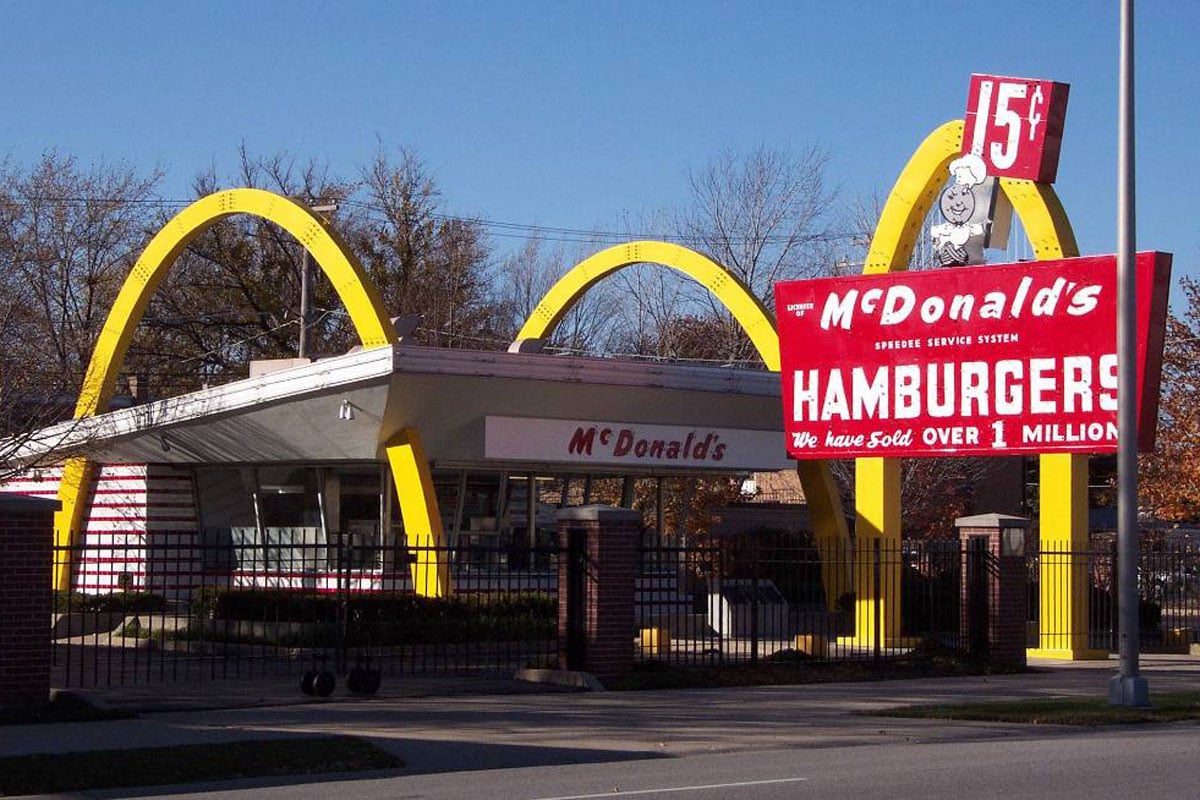On a family trip to Berlin a few years ago we heard the story about the iconic currywurst sausage, which is a famous fast-food dish in Germany. The story goes that in 1949, care packages were distributed by British soldiers to the people of Germany. One woman received a care package that contained, among other things, curry powder and tomato sauce. Not having seen these ingredients before, she mixed them together and served them with a sausage.
Typically, the dish is made from steamed then fried pork sausage, cut into bite-size pieces and served with fries, mayonnaise, tomato sauce and sprinkled with curry powder. I must admit it didn’t sound that appealing but upon hearing this story, we felt compelled to give them a try. So we went to the original store that started selling them in 1960.
Unfortunately, the store was not opening for another 30 minutes so we waited. It tasted surprisingly better than it looked and sounded, but we would never have bothered even trying the dish, let alone waiting 30 minutes, if it was not for the story.
Every business needs a creation story
This is what I call a creation story. A brand story that communicates either the origins of the company or product or both, and most companies probably have a creation story worth sharing.
A great story like the currywurst sausage example can create an instant and potentially long-lasting connection with people that makes them want to buy from you or to work for you.
While creation stories are the most common stories, when it comes to brand storytelling, there are four other types to consider.
- Culture stories demonstrate employees living the company values or sharing what those values mean to them personally.
- Customer stories showcase your customers or what your employees are doing for customers.
- Challenge stories reveal how the company has responded to challenges both big and small.
- Community stories illustrate how the company or employees are doing good things to help the community
Winning brand storytelling requires flexibility
You don’t have to be overly concerned about what category the story falls into. For example, when Sydney distillery Archie Rose were forced to close their bar during COVID-19 lockdowns, they made the immediate decision to switch production from spirits to hand sanitiser to meet market demands.
Within three days they had sourced bottles, reconfigured their production line, created and printed labels, and produced 7500 bottles of hand sanitiser – in just three days.
I consider this a challenge story, but it could easily be culture, community or, for the production of hand sanitiser, a creation story.
This story had an instant connection and immediately received local and worldwide attention. Within four months of the story spreading, they had doubled their database and their social media platform grew by 30 per cent. They believe that brand awareness was accelerated by at least 12 to 18 months.
What’s more, I would also suggest they have generated some pretty strong employee engagement and loyalty along the way.
If companies are serious about strengthening their brand to connect and engage with customers and employees in a more effective way, then they should consider implementing brand storytelling. The two examples of currywurst sausage and Archie Rose hand sanitisers show the benefits of implementing brand storytelling.
Getting serious about brand and storytelling is not easy and it’s not quick. However, done right and done authentically, it has the potential to create long-lasting brand loyalty.
Gabrielle Dolan is a global expert on business storytelling and real communication. She is also the author of Magnetic Stories: Connect with Customers and Engage Employees with Brand Storytelling.
Read next: The most powerful luxury brands in the world right now







